Why is the dishwasher bad at washing dishes and what to do?
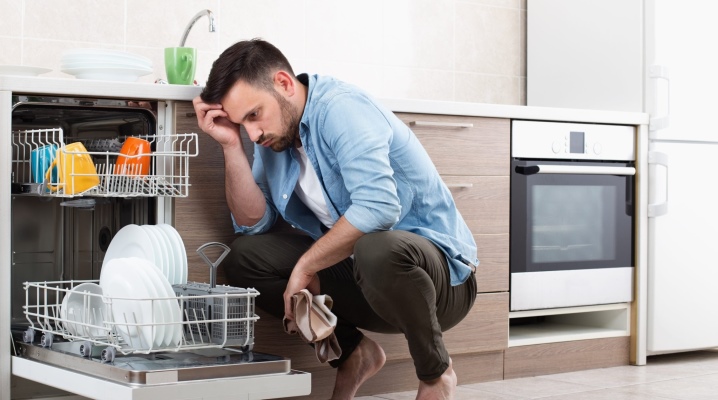
It is very important for many owners of modern household appliances to find out why the dishwasher does not wash the dishes well and what to do. The reasons why a dishwasher is not good at washing dishes can vary greatly. And the actions in each specific case are quite different.
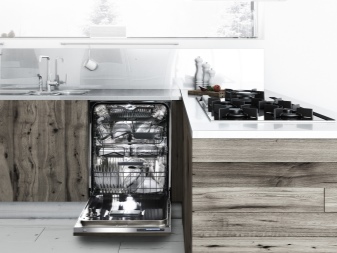

Incorrect operation
Dishwashers really save time and effort of users, save water. But an illiterate approach to them often leads to serious problems and devalues this generally good technique. Many users do not pay enough attention to the instructions of the manufacturers, and then wonder why the new machine does not wash or wash the dishes poorly. Meanwhile, a careful acquaintance with these instructions immediately indicates a number of characteristic deviations and errors that cannot be ignored. Thus, an attempt to use a little-known or arbitrarily chosen detergent is a serious mistake.
All manufacturers strongly recommend a strictly defined range of cleaning products. And when using such formulations, you can be confident both in the quality of the wash and in maintaining the machines in perfect order. Theoretically, there may not be any harm from replacing the recommended funds with self-selected ones. But there is always a risk, and even if there are positive examples.
Problems can affect both the efficiency of washing and the quality of the equipment itself.


But even the right type of drug needs the right dosage. This moment is especially relevant when the dishes are heavily clogged. When it is poorly washed, you need to look at the instructions for both the washing machine and the reagent. There is a good chance that the problem will be resolved quickly.
Another mistake is the wrong choice of intensity. For washing systems, it is equally bad to constantly operate both in the most economical and in the most energetic modes. In the first case, the lubricant will not get on the remote parts of the mechanism, in addition, favorable conditions will be created for the reproduction of bacteria. In the second variant, the wear of the working chamber and the main mechanisms will sharply increase, and the quality of dishwashing will deteriorate.
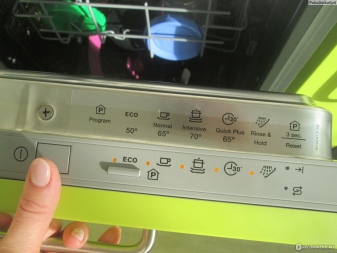
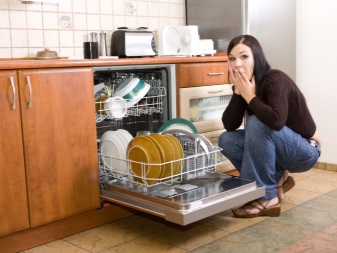
Therefore, often the users themselves are to blame for the appearance of stains, fatty deposits after washing. They should simply split the wash into several sessions, and the technique will successfully cope with the task.
Another common problem is illiterate editing. This happens if the owners themselves undertake the installation, or incomprehensible "people from the street", or the installers work carelessly. When the drain level is selected incorrectly, you can hardly count on a good quick cleaning of the dishes. Moreover, if the placement is unsuccessful, insufficient water pressure is very likely. Because of it, machines work intermittently and give out poorly cleaned utensils - no programs and powerful cleaning agents can fix the situation.
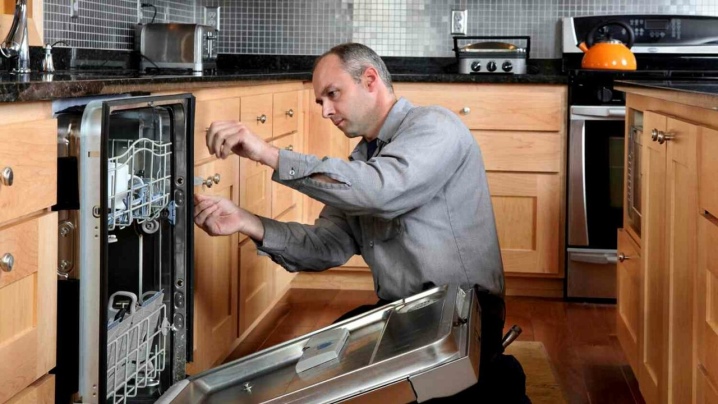
Irregular care
Sometimes it also happens - like the dishwasher initially coped with its duties, and then began to rinse the dishes poorly or began to give them out with stains of grease and dirt. This is usually due to dirty filters. Taking on the flow of foreign substances, they inevitably accumulate it. And even seemingly clean tap water passing through the sprinklers invariably contains foreign components that are also deposited.
That is why the dishes of careless owners after processing in a typewriter are still greasy to the touch and shrouded in stains. Banal flushing of filters and spraying devices solves this problem. Some manufacturers even advise to resort to such a procedure after each wash. But it is not enough to restrict ourselves to putting things in order with the indicated two parts. You will also need to clean the working chambers of the dishwashers and especially their grates, on which all kinds of dishes are installed. It is better to do this in advance, at least once every few weeks, so as not to face the need for "emergency cleaning".
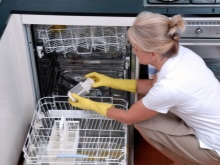
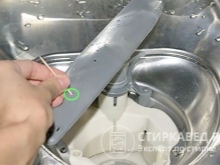
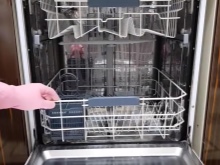
Directly related to poor maintenance and scale formation. If it has arisen, then:
- the machine will not be able to fully spray water and detergents;
- the execution of the washing cycle will be very difficult;
- the risk of equipment breakdown will increase.
This is manifested first of all by the poor quality of washing. Scale is mainly due to the deposition of magnesium and calcium salts on metal parts. They are always found in tap water, and in regions with particularly hard water they are especially affected. A dry wash with citric acid helps to overcome the formation of limescale.
Important: some manufacturers offer special preparations to combat salt deposits - and it is unreasonable to ignore this recommendation.

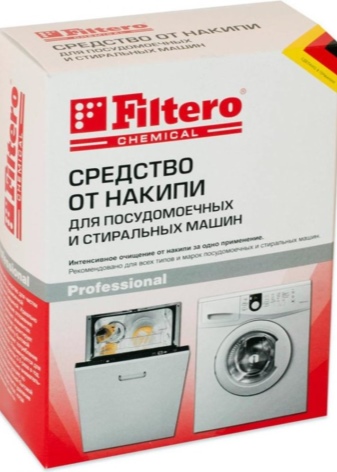
Possible malfunctions
The heating element is broken
Among the reasons why a dishwasher does not wash dishes well, this factor is not the least. High-quality removal of dirt is possible only in sufficiently heated water. If the heat block does not cope with its function, then one can not even dream of any positive result. The heating element not only loses efficiency from the formation of scale and spends more electricity - over time it simply burns out. The only way to fix something is to disassemble the case and replace the heating unit with a part from scratch.
Problems with heating elements are usually detected by visual inspection. But in more serious cases, using a tester helps a lot. It is not particularly worth to be upset because of the revealed defect. Engineers have known for a long time that a heater is a commonplace consumable. True, it should be understood that the price of such a block is very high.
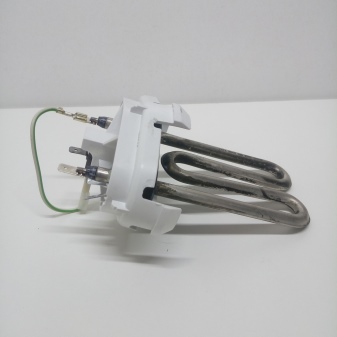
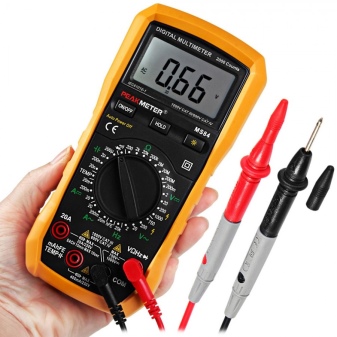
Breakdown of the circulation pump
This problem is equally reflected in any dish - it does not matter if it is on the top shelf or somewhere else. Even a small defect turns into the inability to pump up water. Cookware naturally looks dirty and has a cloudy surface. Almost all that can be done in such a situation is to replace the problem device with a new factory copy.
In a less serious case, the pump is disassembled and debugged as follows:
- turn the device over;
- remove the bottom (removing the screws that hold it);
- disconnect the wires;
- clean all parts using an unsaturated detergent solution;
- change seals;
- assemble the pump in the reverse order;
- return the bottom to its place and fix it as expected;
- put the dishwasher in place.
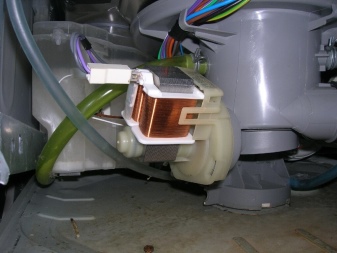
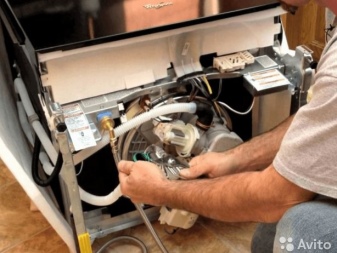
Sprinkler impeller problems
Placing large pans on the bottom row of the dishwasher, many people are already looking forward to how they will be cleaned quickly and easily. But improper operation of the impeller ruins their plans. Again, the problem is solved most often by replacing the damaged node. In less difficult cases, cleaning the impeller and its general diagnostics can be dispensed with.
It is worth noting that sometimes the impeller stops with it itself. In this situation, the primary source of the problem is usually a drain failure. Dealing with the impeller, "on the way" inside the car they meet the pump mesh. It should also be removed and washed.
If the problem is a blockage, after removing it, the device will usually start working properly.
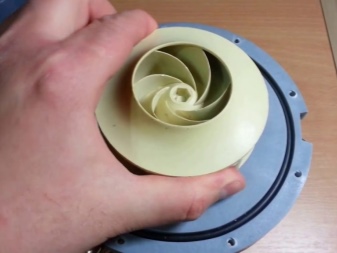
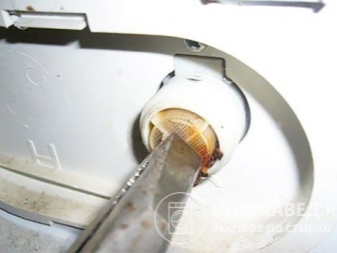
Broken temperature sensor
But even if only spoons are laid out in the dishwasher, they can again be washed badly.The reason is approximately the same as that of a heater breakdown. With incorrect information from the sensor or their complete absence, the water usually does not warm up. However, if it always heats up to only one value, this is also not very good. This can be fixed only by completely replacing the problem node.
The thermistor can even be checked visually. Almost always a failed apparatus is melted down and has other external defects. Only in some cases it is necessary to carry out additional control with a tester. In addition to resistance, it is recommended to check the thermistor for leakage current. The final test is the determination of the insulation resistance.

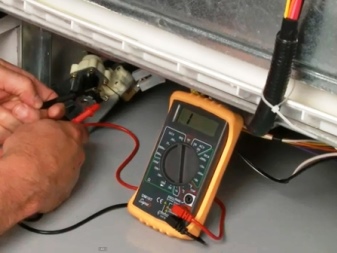
Control module problems
And this block is also very important for the quality washing of the dishes in the basket. But the software board itself is prone to many problems. In case of malfunctions in it, heating, draining, the beginning and end of programs may occur incorrectly. In the worst case, the machine completely stops responding to any button presses and other actions.
Depending on the severity of the defect, you will either have to install a new firmware or change the defective part.
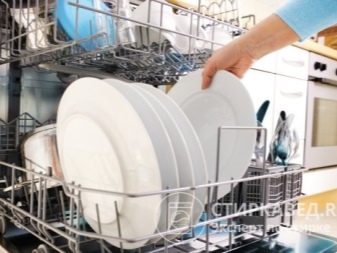
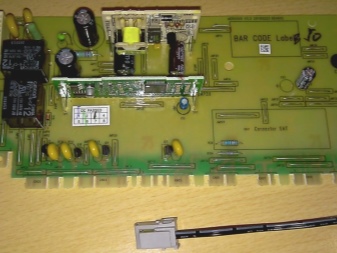
Broken turbidity sensor
This happens only in certain elite class cars. No wonder - there are simply no such sensors in cheaper technology. The role of the device is so that the electronic board can correctly decide whether it is time to stop the cycle or if it should continue. Most often, a failure is expressed in an "endless wash". But sometimes it breaks off prematurely or even - all the time "stumbles" and starts over.
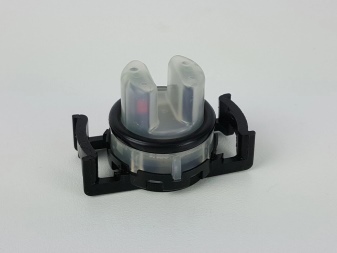
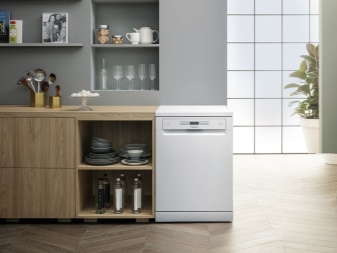













The comment was sent successfully.